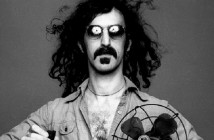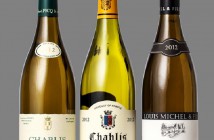Sam Gibbons was my Congressman when I was in college. What I remember about him most is the story he told us about parachuting into Normandy on D-Day. There was something special he was carrying—and it landed safely with him.
He was a 24 year-old captain for the “Screaming Eagles,” the 501st Parachute Infantry Regiment, 101st Airborne Division. Late on the afternoon of June 5, 1944, Capt. Sam Gibbons was making a list and checking it twice. He would be on of 12,000 paratroopers to be dropped behind enemy lines on D-Day.
“My equipment was typical for the jump that night,” wrote Capt. Sam Gibbons in his memoir I Was There. “Two parachutes. One main on my back and a reserve on my chest in case the main malfunctioned—both camouflaged green and brown and made of nylon (a brand new substance in those days)…
[Editorial Comment: Note the precision of what paratroopers needed to carry, making this story all that more incredible. The gear, equipment and supplies weighed more than 70 pounds.]
Gibbons continues, “We also wore an equipment harness and ammunition belt with thirty rounds of .45 caliber pistol ammo and about one hundred rounds of .30 caliber rifle ammo, two hand grenades, a .45 caliber pistol [M1911], loaded and cocked, a .30 caliber folding stock rifle [M1A1 carbine], loaded and cocked, a ten-inch-blade knife strapped to the…calf for hand-to-hand combat, a canteen with one quart of water, one spoon and canteen cup used as a cooking utensil, some water purification tablets, a combat first aid kit tied to the camouflage material that covered our steel helmets (special helmet liner required so helmet wouldn’t be blown off in jump), special first aid kit containing two shots of morphine, sulfa drugs and compress bandages to stop bleeding. In a leg pocket we carried a British-made anti-tank mine because there were plenty of tanks nearby…an equipment bag containing a raincoat, a blanket, toothbrush, toilet paper and six meals of emergency K rations – a combination shovel and pick for digging in; maps, flashlight, compass; also an ‘escape kit’ containing a very small compass, small hacksaw blade, a map of France printed on silk and $300 worth of well-used French currency. This kit was enclosed in a waterproof container measuring four inches by six inches by one-quarter inch – everyone was encouraged to hide it in a different place on the body. I carried mine inside my sock, just above boot top on my right leg…
“We wore our identification (dog tags) on a light metal chain around our necks, taped together so they didn’t click or rattle. And at noontime before the invasion we had received our last surprise: A “cricket.” This was a metal device made partially of brass and partially of steel. When you depressed the steel it made a snapping sound or a “crick.” And when you released the steel part, it would crick again. This was something we had not counted on and had never heard about, but it was to be our primary means of identification between friend and foe during the night assault. We cricked them a few times and rehearsed (we were to crick once and wait for a response of two cricks)—laughing all the time…”
There were also two non-issue items Gibbons jumped with that night: In his gas mask case, instead of the gas mask, he had placed two cans of Schlitz beer! They landed safely.
You know the story of the good, bad and ugly of the paratroop landings. To say it did not go as planned is huge understatement. Gibbons had to scramble and assemble what troops he could. His objective was to take the town of St. Come-du-Mont. Those who did meet up held a war council on the best way to carry out their mission.
At the end of the council, Gibbons decided this was the moment: Schlitz time. He took out the two cans and shared them with a fellow officer. “When the cans were empty we decided to leave them in the middle of the road as a monument to the first cans of Schlitz consumed in France and moved on,” Gibbons wrote.
As reported here by the Defense Media Network describes a reprise of the two cans of Schlitz. “In 1994, President Bill Clinton appointed Gibbons general chairman of the 50th Anniversary of Normandy commemoration committee. At a White House dinner, Gibbons was brought two cans of Schlitz beer on a silver platter. When the dinner was over, Gibbons took the two cans with him, unopened.
“Some time later that year, Gibbons returned with his family to Normandy, where they drank those two cans of beer and left them sitting on the road as a monument of a different sort, in the same place where five decades earlier, a 24-year-old captain and a few American paratroopers finished their shared beer, got back to their feet, checked their weapons, and moved toward their objective.”
We move on, but the memory lingers. To Sam Gibbons.




